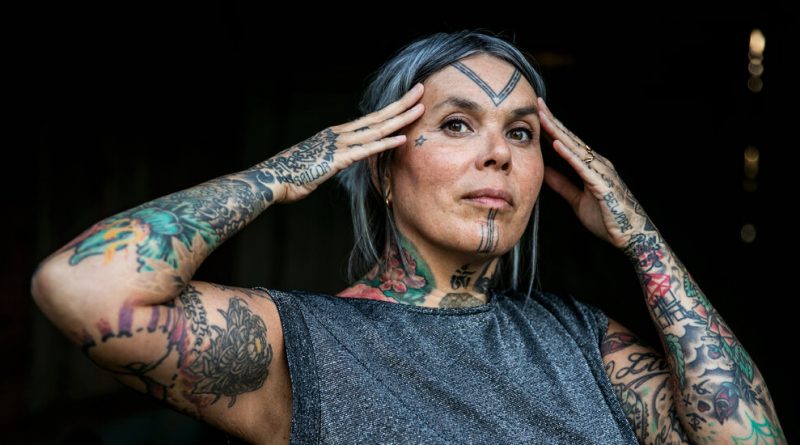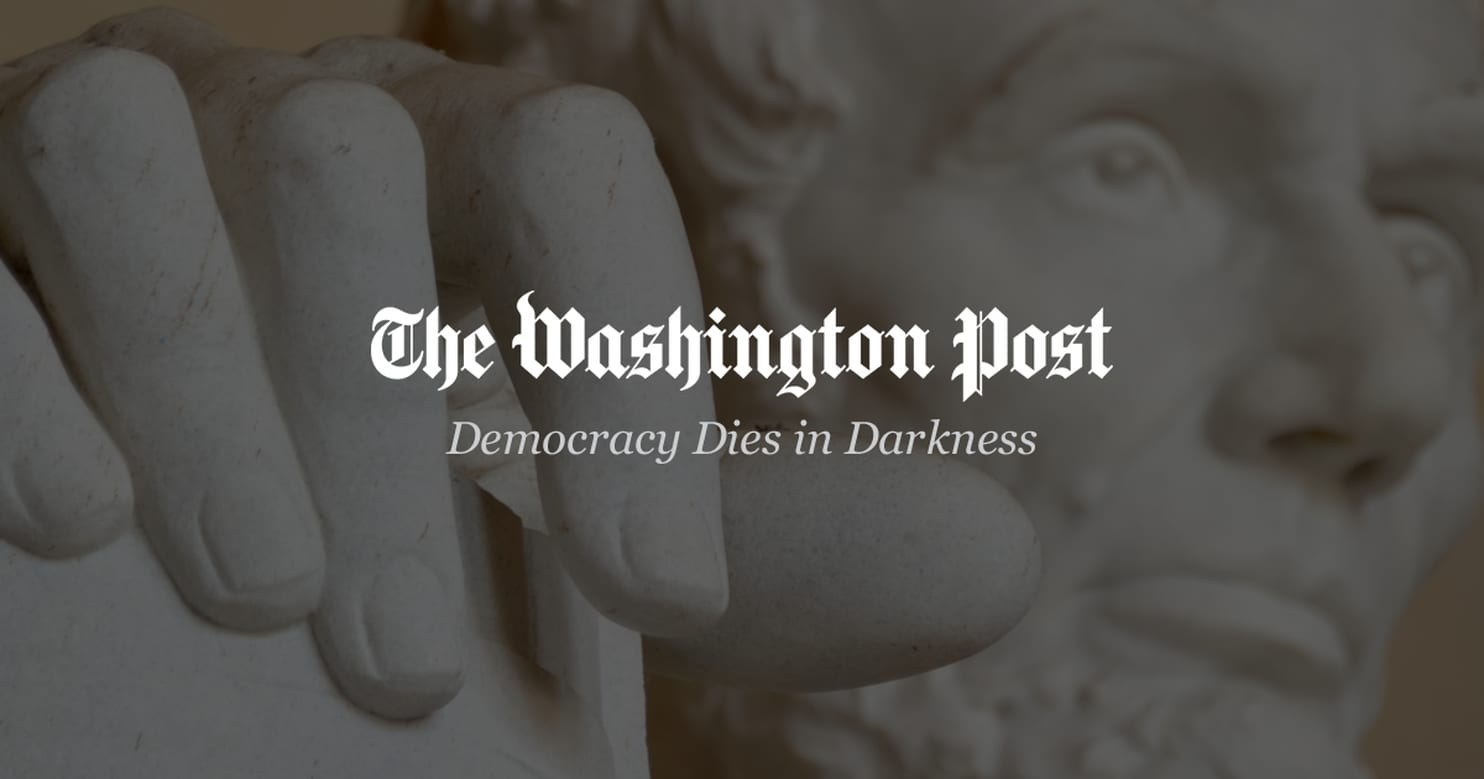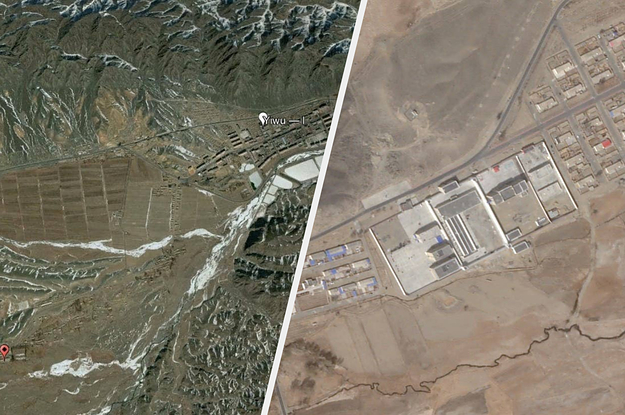Inked Mummies, Linking Tattoo Artists With Their Ancestors
In the 1970s, hunters stumbled upon eight 500-year-old bodies preserved by the Arctic climate near Qilakitsoq, an abandoned Inuit settlement in northwest Greenland. Later, when scientists photographed the mummies with infrared film, they made an intriguing discovery: Five of the six females had delicate lines, dots and arches tattooed on their faces.
For thousands of years, tattoos were more than just body decoration for Inuit and other Indigenous cultures. They served as symbols of belonging, signified coming-of-age rituals, channeled spiritual beliefs or conferred powers that could be called upon while giving birth or hunting. Yet starting around the 17th century, missionaries and colonists intent on “civilizing” Indigenous people put a stop to tattooing in all but the most remote communities.
The practice so thoroughly disappeared in Greenland that Maya Sialuk Jacobsen, who spent her childhood there, worked for a decade as a Western-style tattooist before realizing that her Inuit ancestors had also been tattooists, albeit of a very different nature.
Today, Ms. Sialuk Jacobsen uses historical documents, artifacts and the Qilakitsoq mummies — several of which are now on display at the Greenland National Museum — to research traditional Inuit tattoo designs. Then she hand pokes or stitches the patterns onto the faces and bodies of Inuit women, and occasionally men, helping them connect with their ancestors and reclaim a part of their culture.
“I take great pride in tattooing a woman,” she said. “When she meets her foremothers in the next world, it will be like looking in a mirror.”
Without the physical record left by ancient tattooing, modern practitioners like Ms. Sialuk Jacobsen would have little evidence to guide their work. Fortunately, as more Indigenous tattooists around the world resurrect lost traditions, a small group of archaeologists is tracing tattooing through time and space, uncovering new examples of its role in historic and prehistoric societies. Together, the scientists and artists are showing that the urge to ink our bodies is deeply rooted in the human psyche, spanning the globe and speaking across centuries.
Put the needle on the record
Until recently, Western archaeologists largely ignored tattooing. Because of these scientists’ disinterest, tools made for tapping, poking, stitching or cutting human skin were cataloged as sewing needles or awls, while tattooed mummies “were regarded more as objects of fascination than scientific specimens,” said Aaron Deter-Wolf, a prehistoric archaeologist at the Tennessee Division of Archaeology and a leading researcher in the archaeology of tattooing.
Even when the 5,300-year-old body of Ötzi the Iceman was recovered from the Italian Alps in 1991 bearing visible tattoos, some news reports at the time suggested the markings were evidence that Ötzi was “probably a criminal,” Mr. Deter-Wolf said. “It was very biased.”
But as tattooing has become more mainstream in Western culture, Mr. Deter-Wolf and other scientists have begun to examine preserved tattoos and artifacts for insights into how past people lived and what they believed.
A 2019 investigation into Ötzi’s 61 tattoos, for example, paints a picture of life in Copper Age Europe. The dots and dashes on the mummy’s skin correspond with common acupuncture points, suggesting that people had a sophisticated understanding of the human body and may have used tattooings to ease physical ailments like joint pain. In Egypt, Anne Austin, an archaeologist at the University of Missouri-St. Louis, has found dozens of tattoos on female mummies, including hieroglyphics suggesting the tattoos were associated with goddess worship and healing. This interpretation challenges 20th-century male scholars’ theories that female tattoos were simply erotic decorations or were reserved for prostitutes.
The scientific study of tattooed mummies also inspires practitioners like Elle Festin, a tattooist of Filipino heritage living in California. As co-founder of Mark of the Four Waves, a global community of nearly 500 members of the Filipino diaspora united through tattooing, Mr. Festin has spent more than two decades studying Filipino tribal tattoos and using them to help those living outside the Philippines reconnect with their homeland. One of his sources is the “fire mummies” — people from the Ibaloi and Kankanaey tribes whose heavily tattooed bodies were preserved by slow-burning fire centuries ago.
If clients are descended from a tribe that made fire mummies, Mr. Festin will use the mummies’ tattoos as a framework for designing their own tattoos. (He and other tattooists say that only people with ancestral ties to a culture should receive that culture’s tattoos.) So far, 20 people have received fire mummy tattoos.
For other clients, Mr. Festin gets more creative, adapting age-old patterns to modern lives. For a pilot, he says, “I would put a mountain below, a frigate bird on top of it and the patterns for lightning and wind around it.”
Yet while mummies offer the most conclusive evidence of how and where past people inked their bodies, they’re relatively rare in the archaeological record. More common — and thus more helpful for scientists tracking the footprint of tattooing — are artifacts like tattoo needles made of bone, shell, cactus spines or other materials.
To show that such tools were used for tattooing, rather than stitching leather or clothing, archaeologists such as Mr. Deter-Wolf replicate the tools, use them to tattoo either pig skin or their own bodies, then examine the replicas under high-powered microscopes. If the tiny wear patterns made by repeatedly piercing skin match those on the original tools, archaeologists can conclude that the original artifacts were indeed used for tattooing.
Through such painstaking experiments, Mr. Deter-Wolf and his colleagues are pushing back the timeline of tattooing in North America. In 2019, Mr. Deter-Wolf was an author of a study that showed that the ancestors of modern Puebloan people were tattooing with cactus spines some 2,000 years ago in what is now the American Southwest. This year, he published a finding showing that people were tattooing with needles made of turkey bones in what is now Tennessee about 3,500 years ago.
Dion Kaszas, a Hungarian, Métis, and Nlaka’pamux tattoo practitioner and scholar in Nova Scotia, is learning how to create his own bone tattoo needles from Mr. Deter-Wolf and Keone Nunes, a Hawaiian tattooist. His goal, he said, is to “get back to that ancestral technology; to feel what our ancestors felt.” Because few examples remain of Nlaka’pamux tattooing, Mr. Kaszas uses designs from baskets, pottery, clothing and rock art. Research from other cultures shows that tattoo designs often mimic the patterns on other artifacts.
For Mr. Kaszas and others, tattooing isn’t just a way to revive an Indigenous language nearly silenced by colonialism. It also has the power to heal wounds of the past and strengthen Indigenous communities for the future.
“The work our tattoos are doing to heal us is a different kind of work than our ancestors used them for,” Mr. Kaszas said. “That’s a form of medicine, for people to look down at their arm and understand they’re connected to a family, a community, the earth.”
Ink back from the brink
Although people from numerous cultures have reclaimed their tattooing heritage in the past two decades, there are many others who have had theirs obscured entirely by colonization and assimilation. As scientists pay more attention to tattooing, though, their work could bring more lost traditions to light.
Mr. Deter-Wolf hopes that archaeologists in other parts of the world will begin identifying tattoo artifacts using the methodology he and other North American scientists have pioneered, pushing back its footprint even further. He also oversees an online, open-source database of tattooed mummies, meant to correct popular misinformation and illustrate the geographic spread of such specimens. The list includes mummies from 70 archaeological sites in 15 countries — including Sudan, Peru, Egypt, Russia and China — but Mr. Deter-Wolf expects it to grow as infrared imaging and other technology uncover more inked skin on existing mummies.
Back in Greenland, Ms. Sialuk Jacobsen hopes that the Qilakitsoq mummies also have more secrets to yield. She is encouraging museum directors to examine other parts of the mummies’ bodies, such as their thighs, with infrared imaging. Inuit women in other parts of the Arctic receive thigh tattoos as part of birthing rituals, but while historical drawings show thigh tattoos on Greenlandic women, there isn’t yet any tangible evidence.
If the Qilakitsoq mummies do have thigh tattoos, Ms. Sialuk Jacobsen may one day copy the patterns onto women from the Qilakitsoq region, drawing a line between the generations of the past and those yet to come.
“Our tattoos are very selfless,” she said. They aren’t just for the woman receiving them, but for her grandmothers, her children and her entire community as well.
Sahred From Source link World News



